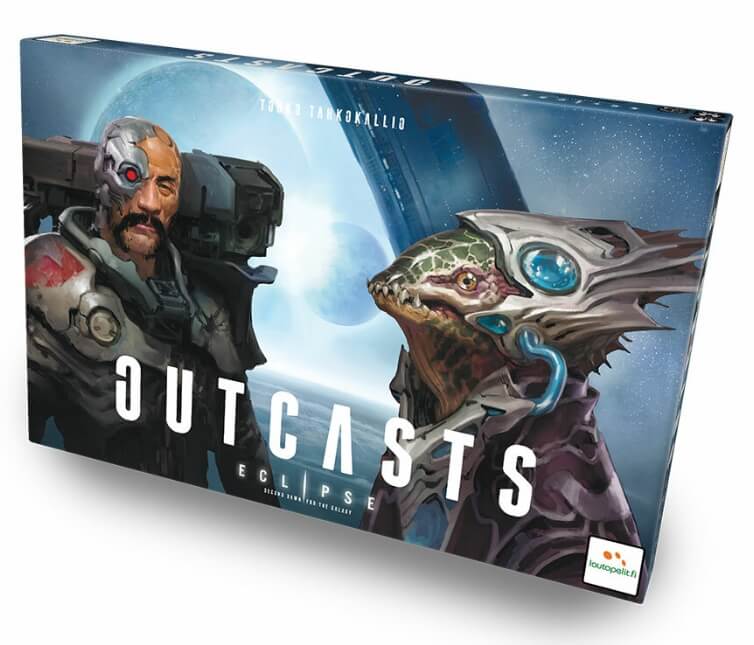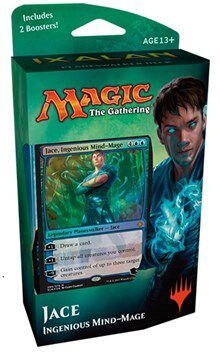
Eclipse: The Second Awakening of the Galaxy
Eclipse: The Second Awakening of the Galaxy is an immersive strategy game that puts you in command of a space civilization seeking galactic domination. In this game, you will explore unknown star systems, develop innovative technologies and build powerful ships to confront your opponents. The competition is fierce; you must adapt your strategy according to the unique characteristics of your race, while observing the actions of the other civilizations that are also seeking supremacy. This new edition features an updated graphic design, preserving the symbolism that won players over in the original. With the addition of detailed miniatures, new gameplay elements and a narrative developed by the talented author Johanna Sinisalo, Eclipse promises an immersive and strategic experience. In addition, the gameplay has been refined with new rules and components, ensuring that each match is unique and challenging. Complexity: 3.63 / 5 (BGG 25/05/2023) AWARDS AND RECOGNITIONS: - 2021 Geek Media Awards Game of the Year winner for experienced players - 2021 Geek Media Awards Game of the Year for experienced players nominated - 2020 Charles S. Roberts Winner for Best Sci-Fi Fantasy Board War Game - 2020 Charles S. Roberts Nominated for Best Sci-Fi Fantasy Board War GameArtists: Jere Kasanen; Jukka Rajaniemi
Designers: Touko Tahkokallio;
Date: 2020
Note: 8.6
Mechanics: Critical Hits and Misses, Alliances, Trees / Technology Trails, Fitting Parts, Elimination of players, Hexagonal grid, Area Impulse, Influence / Majority in the Area, Players with Different Skills, Area Movement, Movement in Grids, Variable phase order, Pass Action Sheet, Income, Data Scrolling, Support without reward, Modular tray
Topics: Science Fiction, War, Fighting / Martial Arts
Table of Contents
- How to Play
- Tips for playing
- Game mechanics
- Game components
- Additional Information
OBJECTIVE OF THE GAME
Tips for playing
Here are some tips for doing better in the game Eclipse: The Second Awakening of the Galaxy:
- Prioritize the development of technologies that improve your economic and military resources.
- Focus on strengthening your diplomatic relations to avoid unnecessary confrontations.
- Explore and expand your territory early in the game to gain strategic advantages.
- Balance your strategy between expansion, diplomacy and military force to dominate the galaxy.
- Manage your resources efficiently to build a solid and sustainable economy.
- Keep an eye on your opponents' actions to anticipate their moves and adapt your tactics.
- Use your unique faction skills to your advantage to establish superiority.
- Prioritize the occupation of planetary systems that offer greater resources and special benefits.
- Plan your shifts in advance to optimize your actions and avoid waste.
- Use smaller ships for skirmishes and reconnaissance, reserving larger ships for decisive battles.
Video about the game
GAME mechanics
- Placement of parts: Each player places their ships and structures on the hexes of the modular board, representing the expansion of their empire. The strategic placement of the pieces is crucial to controlling resources and territories.
- Influence / Majority in the Area: Players compete for control of space sectors. Controlling more areas offers greater income and strategic advantages, influencing the calculation of victory points at the end of the game.
- Elimination of players: In situations of intense combat, a player can lose all their ships and colonies, resulting in elimination from the game. Defensive strategies are important to avoid this situation.
- Players with Different Skills: Each faction in the game has unique skills that change the way you play. These skills influence strategies such as exploration, combat and technological development.
- Movement in Grids: The ships move around the hexagons on the board, which represent sectors of space. Route planning is essential for combat and exploration.
- Variable phase order: The game's phases, such as exploration, combat and research, can have their order adjusted depending on game events or player choices, offering dynamism to the game.
- Rolling dice: Space battles are resolved by rolling dice, introducing an element of uncertainty and luck into the confrontations, influencing the outcome of the battles.
- Modular tray: The board is made up of hexagonal pieces that are arranged randomly for each game, guaranteeing a different experience every time.
- Area Impulse: Certain areas on the board confer temporary bonuses when occupied. These boosts can significantly alter players' short-term strategy.
- Pass Action Sheet: Players use action tokens to carry out different activities. Taking turns strategically allows you to react to opponents' actions without losing resources.
- Critical Hits and Misses: In combat, extreme dice values can result in critical hits or misses, drastically altering the outcome of a battle and influencing tactical decisions.
- Alianças: Players can form temporary alliances to face bigger threats or share combined territories. Although useful, these alliances are fragile and can be broken at any time.
- Trees / Technology Trails: Each player can technically evolve their faction through a technology tree, unlocking new ship components or skills that offer different advantages.
- Hexagonal grid: The board is made up of hexagons, making navigation and strategic planning easier, with each space offering different challenges and benefits.
- Income: Controlled sectors generate resources that are used to build ships, develop technologies or expand the empire, and good management of these revenues is essential.
- Support without reward: Supporting other players during conflicts does not provide direct rewards, but it can be a strategy to weaken rivals or strengthen alliances.
- Area Movement: Players' fleets move through controlled or unexplored areas, impacting their strategy of exploration and territorial expansion.
Game components
See all the items in the game below Eclipse: The Second Awakening of the Galaxy:
- Small bags
- 11 Plastic containers (gray)
- Technological parts (114 units)
- 24 colonizer ship parts (including 5 extras)
- 36 exploration pieces
- 18 ambassador bookmarks
- Trays for components
- 6 control plates (with varying thicknesses)
- 2 Fabric bags
- 54 sector hexagons
- 24 personalized six-sided dice
- Miniature ships (108 players)
- 1 round marker (purple)
- 41 additional miniatures (in gray)
- 10 monolithic/orbital parts (on both sides)
- 12 card-sized pieces
- 6 project parts
- 33 reputation tokens
- 1 distortion portal tile
- 18 storage markers
- 1 rule book
- 1 storybook (Beyond the Galactic Veil)
Additional Information
- Ludopedia link: https://ludopedia.com.br/jogo/eclipse-second-dawn-for-the-galaxy
- Link Tabletopia:
- Amazon Brazil link: Comprar Eclipse: O Segundo Despertar da Galáxia
- Amazon USA link: Comprar Eclipse: O Segundo Despertar da Galáxia


